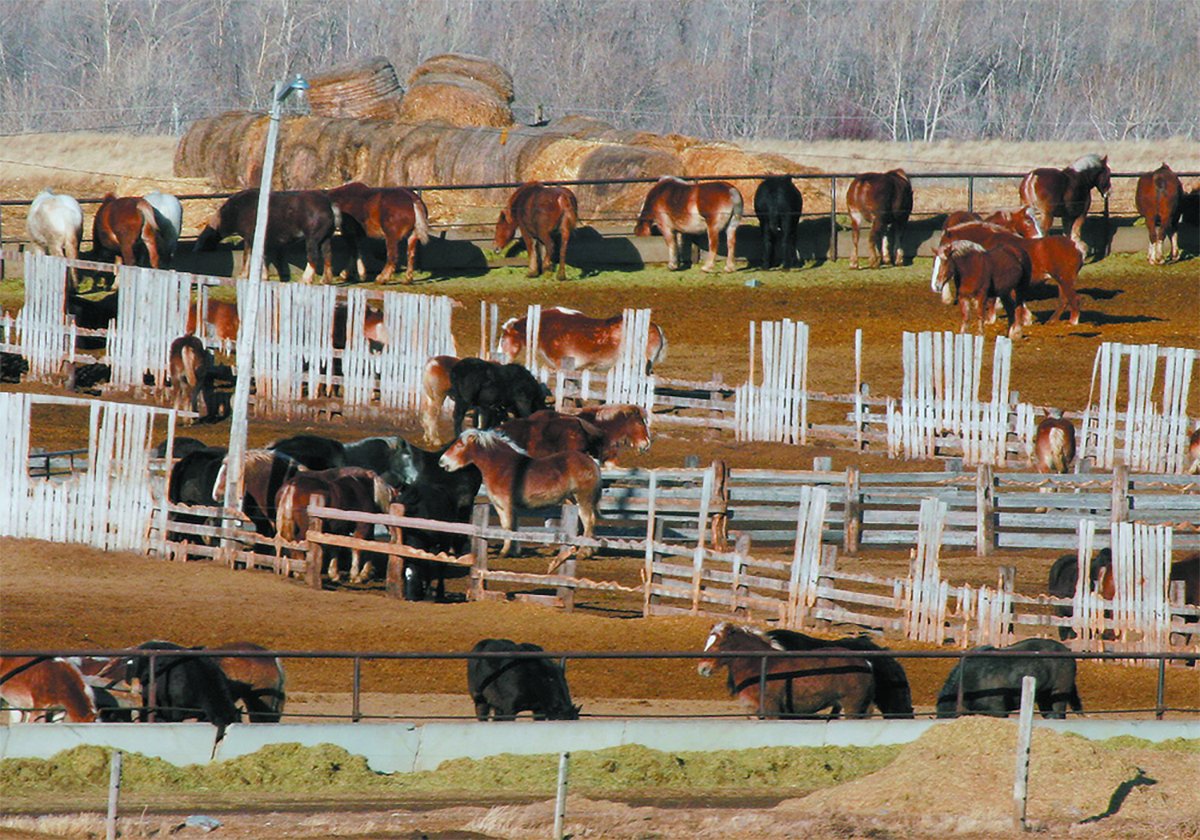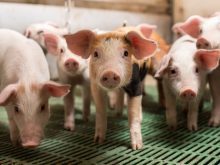Ken Wright has decided growing native plants is the perfect way for a lazy man to garden.
He and his wife Pam own Bow Point Nursery, a 14-acre farm west of Calgary, where they grow a wide range of native trees and shrubs. After 15 years they have cultivated plants that are almost sure to survive under the worst setbacks of chinook winds, drought, cold springs, hail storms and short summers.
They strongly advocate using native plants on acreages and farms because of this hardiness.
City lots may not be as suitable for native trees and shrubs because of their tendency to grow wild and take over a space.
Read Also

Canada’s slaughter horse industry lacks transparency
The lack of clear reporting and public access to data keeps the industry largely hidden, leaving questions about humane treatment and traceability unanswered.
The Wrights grew the trees and shrubs from seeds they gathered in coulees, riverbanks and open areas in southern Alberta. Some germinated quickly while others needed a couple of years to take hold.
Pam is a landscaper and has worked on schoolyards, environmental mitigation sites and private property where the clients want hardy plants that look good year round.
“We stress all plants are native someplace, sometime,” said Pam. When plants are removed from their native habitat, adaptation can be difficult. They may die or turn into a weed.
About half the trees and plants available at nurseries are imported from out of province and often suffer under conditions here.
“We’re having drier times in the last few years but it is pretty hard to trick native plants,” said Ken at an acreage trade show held in Calgary March 22-23.
These plants have evolved over thousands of years and can resist most indigenous pests. They are rarely subject to winterkill. Interfering with native plants throws out of balance their natural ability to survive.
“I learned to relax with native plants. The best way to control pests is to ignore them. They’ll go away,” he said.
At his nursery, pest control consists of two cats and a deer fence.
Trees like native willows and dogwood can handle deer and elk browsing. Wright does not recommend planting pines in southern Alberta because wild animals like deer strip them.
The Wrights offer weekly night clinics at their nursery during the growing season. Going back to nature takes some planning and advice.
New gardeners need to realize native plants may grow quite aggressively while others grow slowly. Some trees send out suckers while others prefer open, windy spaces.
Native plants are often planted close together and the grower can expect a small forest for windbreaks or a wildlife habitat if handled properly.
The trees and shrubs require some work when they are first planted.
“There is no such thing as no maintenance,” said Wright.
Plants need to be watered well and should be watched in the early days. They need some organic material in the soil and should be mulched well. Exposed soil encourages erosion and moisture loss.
The Wrights urge people to avoid commercial packages of wildflower seeds. These often contain noxious weeds like oxeye daisy that will hybridize with shasta daisy and become almost impossible to remove.
They also dismiss lawn turf. Instead, they have found native grasses like sheep’s fescue provide good ground cover and stays green year round. Fescue grows in thick bunches and eventually chokes out competing weeds. One pass of a lawnmower in a season is enough.
“It doesn’t have to have a crewcut look to it,” he said.

















